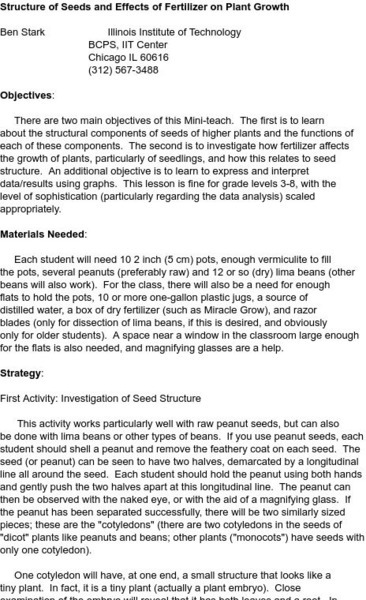Hi, what do you want to do?
Soft Schools
Soft Schools: Plant Parts
Identify the major parts of a plant. Select each part name and drop in the boxes next to the full-color diagram.
Children's Museum
Children's Museum Indianapolis: Plants and Seeds
Students will observe the parts of a seed, and identify how the different parts of the seed help a plant germinate.
Science and Mathematics Initiative for Learning Enhancement (SMILE)
Smile: Structure of Seeds and Effects of Fertilizer on Plants
In this lesson plan, learners identify parts of seeds and the effect of fertilizer on their germination and development.
ClassFlow
Class Flow: Living Things Plants
[Free Registration/Login Required] This flipchart identifies and explains the function of main parts of a plant. It includes various activities for students using the Activboard tools.
HotChalk
Hot Chalk: Lesson Plans Page: Plants and Animals
In this lesson plan, young young scholars will be able to identify a plant's parts, explain their functions, diagram a plant, and create a mobile to demonstrate their understanding.
Soft Schools
Soft Schools: Flower Anatomy
Identify the major parts of a flower. Select each part name and drop in the boxes next to the full-color diagram.
PBS
Nh Pbs: Nature Works: Ecosystems
How would you define an ecosystem? Check out this educational resource to learn more about the living and nonliving parts of different ecosystems.
PBS
Nh Pbs: Nature Works: Photosynthesis
This resource identifies the main parts of the photosynthesis process. Learn more about how sunlight plays in plant growth.
Khan Academy
Khan Academy: The Fuller Brooch
The Fuller Brooch is the earliest known personification of the Five Senses. This splendid circular brooch is made from hammered sheet silver. The center part is decorated with five figures who represent the five human senses. In the...












